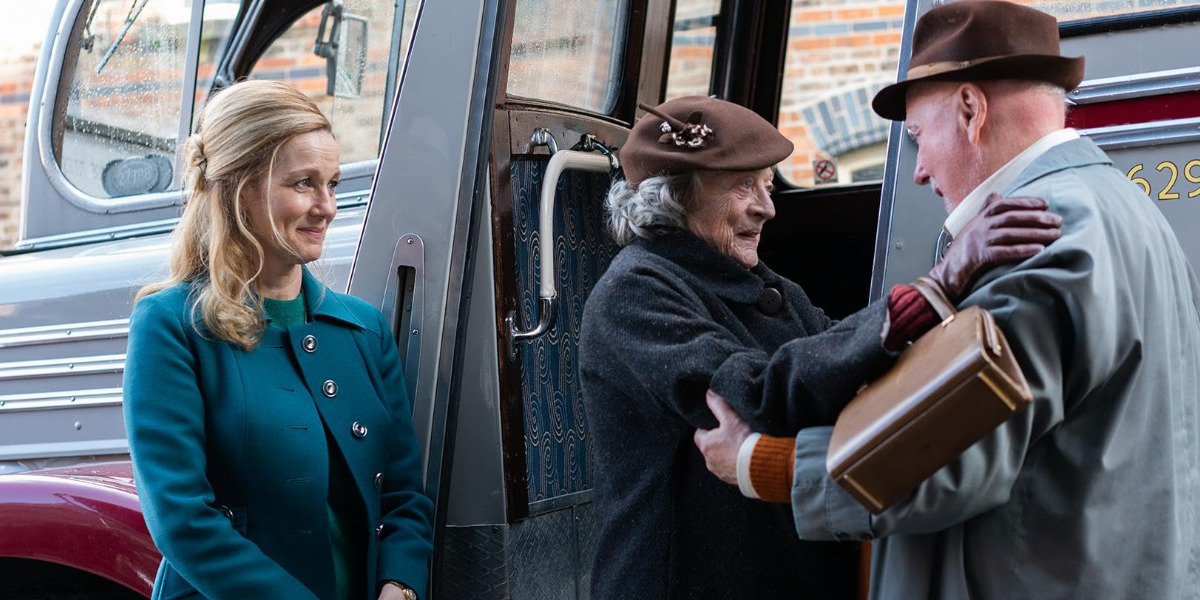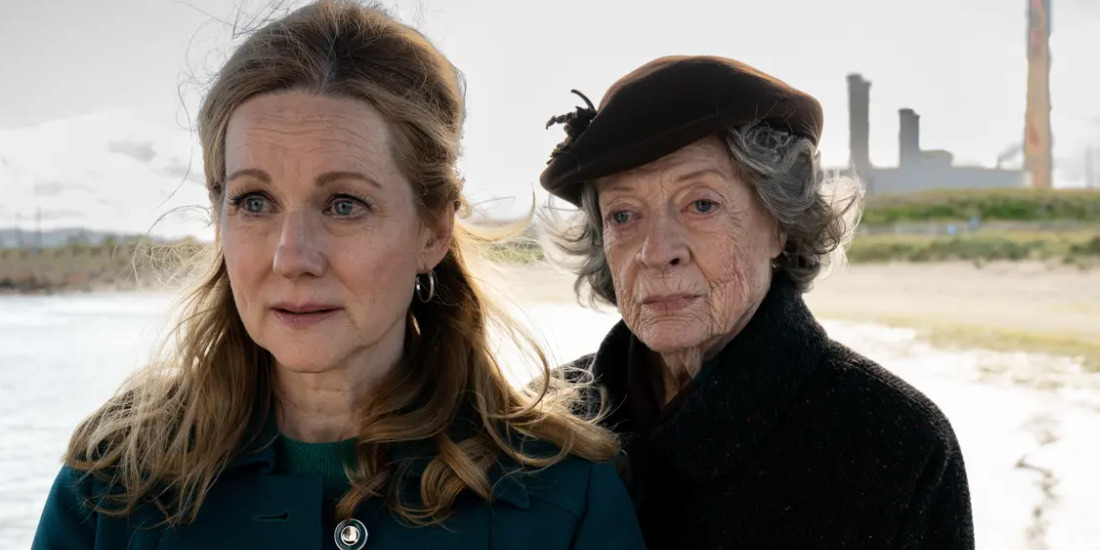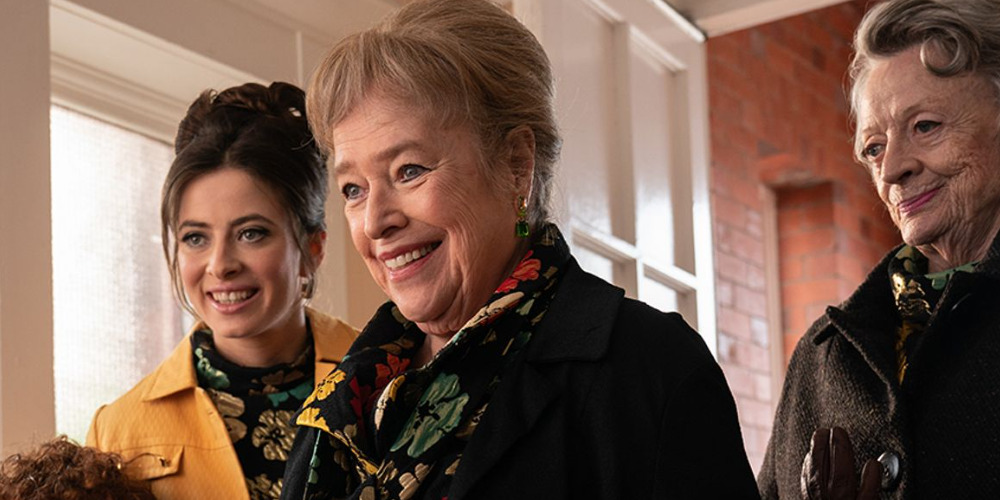‘The Miracle Club,’ a comedy-drama film following a small-town community’s venture into a pilgrimage, charts a story about friendship and redemptions through a life-changing journey that unfolds in unexpected ways. Chrissie Ahearn, banished from her hometown, returns after decades for her mother’s funeral. Around the same time, the town, including The Ahearns’ close friends, Lily, Eileen, and Dolly, prepares for a trip to a holy town in France known for granting miracles. Therefore, as Chrissie decides to take her mother’s spot on the journey, past mistakes and scandals resurface, leading to new revelations.
The transition from the character’s hometown to the holy ground in France remains reflective of the story’s overall themes. As such, the film assigns notable significance to the transformative journey that the town’s women embark on in a search for their own personal miracles. For the same reason, the film’s period setting in such thematically resonant spaces must have piqued the fans’ interest. SPOILERS AHEAD!
The Miracle Club Is Set in The Year 1967
Thaddeus O’Sullivan transports the viewers a good few decades into the past, setting his film, ‘The Miracle Club’ in 1967. The vintage wardrobe choices of the characters highlight the film’s period setting, infusing the visual theme with vibrancy. However, more than that, it’s the story’s social setting that cements its disposition in the late 60s era. Since the film primarily focuses on female stories, the characters’ domestic lifestyle— an inherent default— remains reminiscent throughout the narrative.

While contemporary stories also find characters requiring a change of scenery in the spirit of self-discovery, Lily, Eileen, and Dolly’s escape from their town on a holy pilgrimage specifically involves an escape from their domestic housewife lives. Considering married women weren’t legally allowed to work in public services in Ireland well into the 1970s, these characters’ desperate desire to leave their homes for a short while to take agency over their life’s problems remains a socially relevant plot point.
Yet, the film doesn’t linger much on such complications of the era. Instead, it focuses on a different but equally period-appropriate social issue: pregnancy out of wedlock. In the film, Chrissie’s past with Lily and Eileen is intrinsically tied to her past pregnancy, which earned her a banishment from their community.
In the mid-1900s, Ireland saw a particular rise in mother and baby homes— establishments that helped unwed mothers and their babies by providing refuge for them from the general patriarchal society of the time. According to reports, more than 60,000 single women existed in such homes alongside their babies, with an additional projection of almost 25,000 more women in similar situations.
Filmmaker O’Sullivan discussed the same in a conversation with Decent Films when asked about the Irish Catholic Church’s past intolerance and its relevance in modern media. “I think the enormity of the judgments that people made in that period — to banish a young woman to go and have a baby out of sight — has terrible consequences,” he said. “That’s the kind of thing [that] we’re going to be seeing talked about a lot now in Ireland.”
Thus, since O’Sullivan grew up and left Ireland around the mid-60s, the filmmaker recreated the same social disposition within his narrative with stark authenticity. Therefore, the periodic setting of the film in 1967 remains woven with its plot.
The Miracle Club Takes Place in Ireland’s Ballygar and France’s Lourdes
Much like the film’s historical setting in the 60s, its geographical setting also remains significant to the plot. An Irish film at heart, the story, and its characters find their roots in a small Irish village, Ballygar, situated in the County Galway. Jimmy Smallhorne initially penned the film’s story before Joshua D. Maurer and Timothy Prager joined him as co-writers during the scriptwriting. Therefore, since Smallhorne drew from his past memories of growing up in a working-class neighborhood, the same remained a thematic center within the story.

Furthermore, Smallhorne’s intention to highlight the social position of women, as they faced challenges under their faith at the time, shaped the final image of the main characters within the film. As a result, the film’s ties to Ireland— particularly the small Irish village of Ballygar, inform the cornerstones that build the story’s outline.
On the other hand, the character’s destination— Lourdes of France— also carries immense thematic and narrative significance. Lourdes, a holy place within the Catholic faith, easily fits into the Irish Catholic themes present in the story. The location had particularly been a staple in O’Sullivan’s life, who grew up in a similar Catholic culture.
Even though O’Sullivan never visited the place himself, his parents had partaken in pilgrimages to the town, ensuring the man grew up understanding its significance. Therefore, O’Sullivan and his co-writers were able to infuse the same significance in the screenplay, allowing the characters’ journey to define their narratives.
Read More: The Miracle Club: Is the Movie Inspired by Real Life?


You must be logged in to post a comment.